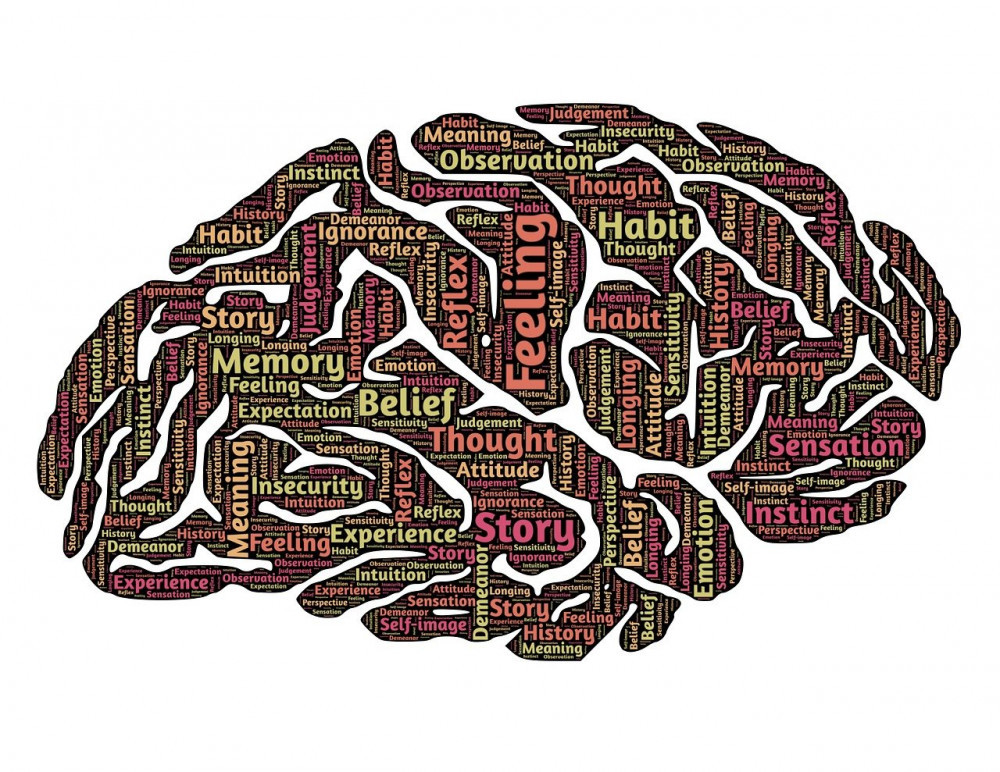“Beauty, Health and Wellness | How Powerful Is the Human Brain?” explores the intricacies of this organ. It is one of the most essential components of the body.
This is a remarkable structure of creation. And it plays an important role in controlling and coordinating a multitude of functions within the body. However, its complexities are under explored.
In this article we’ll look at the structure and function of the brain. Also, how it interrelates with other organs. In addition, we’ll find out how it communicates with the rest of the body for our optimal well-being.
Lastly, we’ll examine the various diseases and disorders related to the brain. However, there is a never-ending quest to better understand how powerful the brain really is. Also, to find solutions for these problems.

Structure of the Brain | An Intricate Organ
The soft, grayish-pink human brain is protected by the bony structure of the skull. The skull surrounds the brain shielding it from many of the dangers it potentially faces.
Primarily, the brain is divided into three regions each responsible for controlling different functions. These three main parts are the forebrain, midbrain, and hindbrain.
The forebrain has responsibility for complex cognitive processes. These include conscious thought, decision-making, reasoning, and sensory perception. It includes the cerebral cortex divided into four lobes:
Frontal Lobe: This lobe has the responsibility for making decisions and an individual’s personality.
Parietal Lobe: It is primarily responsible for processing sensory information.
Temporal Lobe: And, this lobe plays a critical role in memory and language.
Occipital Lobe: Finally, this is where visual processing takes place.
Furthermore, it’s divided into left and right hemispheres. And, each side controls the opposite side of the body,
Moreover, the midbrain serves as a relay center for motor and sensory information. It helps to regulate arousal and attention.
The cerebellum in the hindbrain is responsible for balance and coordination. In addition, the brainstem in this region controls breathing, heart rate, and digestion.
Function of the Brain | An Amazing Organ
This amazing organ plays a critical role in human survival and well-being. It orchestrates essential conscious and unconscious functions.
As such, it uses the senses such as sight, smell, sound, taste, and touch to process information from the external environment. And, this is one of its primary functions.
It then interprets and integrates this information to form a coherent perception of the world. Additionally, it controls voluntary movements of limbs and muscles.
Motor control shows up in movements we perform when carrying out a wide host of activities. For example, it includes the navigation of your fingers when playing an instrument. And, even when writing.
In that, the motor cortex orchestrates the required movements. At the same time, the cerebellum helps to fine tune the accuracy and fluidity of your actions.
Furthermore, it regulates emotions and is instrumental in memory formation. Other crucial functions are language processing, learning, and problem solving.

Optimal Health | Interrelation with Other Organs
It is the nervous system that plays an important role in connecting the brain to other organs in the body. There are two main components: the central nervous system (CNS) and the peripheral nervous system (PNS).
The CNS consists the brain and spinal cord while the PNS constitutes the nerves throughout the body. This facilitates communication between the brain and other organs.
The brain’s interrelation with other organs is critical to maintain the body’s internal balance. Another name for this is homeostasis. The hypothalamus, for example, regulates various physiological processes.
Therefore, the endocrine system’s interaction with the brain is evident. The entire network communicates and coordinates to regulate the release of hormones.
Examples of functions the brain controls for optimal physiological conditions are:
- Heart rate and blood pressure
- Hunger and thirst
- Hormone secretion
- Circadian rhythms
- Body temperature
- Stress response (fight or flight) triggering the release of hormones such as adrenaline.
Health and Wellness | Communication for Optimal Well-being
Major communication takes place between the brain and the rest of the body. This happens through an intricate network of neurons. What are neurons? These are the fundamental cells of the nervous system.
They pass on information by way of electrical impulses. Interestingly, these action potentials travel along neural circuits. And, these specialized pathways enable the rapid interaction of sending and receiving signals from and to the brain.
Thus, this results in swift responses to internal and external changes. Think about your reaction if you accidentally touched a hot surface. You would immediately remove your hand.
But what takes place internally to cause such a response? First, the sensory neurons found in your skin send out a message to your spinal cord and then to your brain.
The brain processes the information and the motor response which results in you extracting your hand. See how quickly it works?
Consider also the matter of neuroplasticity. That’s the ability of the brain to remodel itself, Subsequently, this leads to new paths to regain mobility.
A typical instance is when a person suffering from a stroke regains lost mobility. But, it takes intensive therapy over a period of time.

Health and Wellness | Diseases and Disorders
Unfortunately, this remarkable organ is susceptible to diseases and disorders. Consequently, these have significant impact on the function of the brain.
What are some of these diseases and disorders?
- Alzheimer’s Disease: Older adults fall victim to this progressive neurodegenerative disorder. Its main characteristics are cognitive decline, memory loss, and behavioral changes.
- Parkinson’s Disease: This affects balance and coordination, causes tremors, and rigidity of the muscles. It’s classified as a chronic movement disorder. And, is caused by a loss of dopamine-producing cells in the brain.
- Stroke: An individual may suffer a stroke when there’s a sudden disruption of blood flow to the brain. This oxygen deprivation usually results in brain damage. Symptoms include paralysis, cognitive and speech impairment.
- Anxiety and Depression Disorders: This is commonly due to chemical disorders in the brain. These are mental health conditions impacting mood and emotional well-being.
- Epilepsy: This is a neurological disorder characterized by recurrent seizures. It’s caused by abnormal electrical activity in the brain.
- Schizophrenia: Here is a severe mental disorder affecting an individual’s thoughts, emotions, and behavior. Quite often it leads to delusions, hallucinations, and impaired social functioning.
Conclusion | The Human Brain is Powerful!
The human brain is an intricate and powerful organ. In fact, it’s an astonishing masterpiece of creation. And, its function, structure, and interrelationship with other organs of the body are significant to our overall well-being.
Let’s recap some key takeaways:
- It orchestrates sensory experiences such as the senses.
- Also coordinates bodily systems including movements, emotions, and learning.
- This makes it a central player in maintaining the body’s homeostasis for optimal well-being.
- Despite its high functionality, it’s susceptible to various diseases and disorders.
Understanding the way the brain works is an interesting learning experience. Moreover, the brain is responsible for the capability to explore it as well as other intricate features of our existence.
Hence, researchers and scientists continue to search for ways to understand the brain. Also, they pave the way in developing treatments and interventions to support brain health.
Subsequently, this will lead to the overall quality of life. So, we should all play a crucial part in caring for this essential organ.
“Beauty, Health and Wellness | How Powerful Is the Brain?” has not even scratched the surface. A study of the intricacies of the brain is as complex as its multifaceted structure and function.
However, I hope you found it interesting. Maybe, it has shed light on something you hadn’t already known about the human brain. Moreover, you may want to share something of your own here.
So, if you have any questions or comments, please feel free to leave them below. I will be happy to serve you.
Veron
Business Owner | The Way 4Word Enterprises

This article is very informative and interesting.
Insight into knowledge of how the brain works.
Thank you, Lavern. I certainly appreciate your feedback.